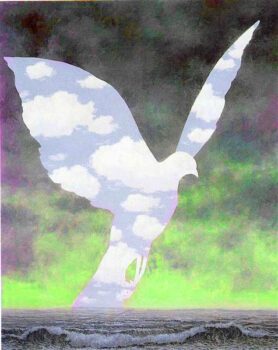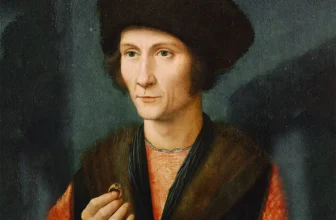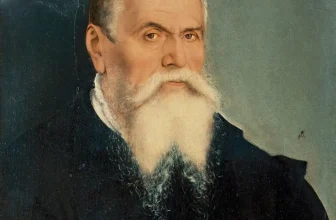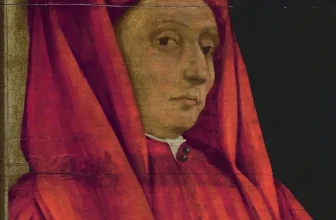Meaning of The Big Family Painting Rene Magritte
René Magritte, one of the most iconic and enigmatic artists of the 20th century, remains a central figure in the world of Surrealism, a movement that strove to unlock the subconscious and challenge conventional perceptions of reality. Among his vast and intriguing body of work, The Big Family (La Grande Famille) stands out as a profoundly symbolic and evocative painting that encapsulates many of the themes and ideas central to Magritte’s oeuvre.
This story post provides a high-quality, in-depth analysis of The Big Family, examining its symbolism, meaning, the artistic style it embodies, and the context in which it was painted. We will explore what this painting represents, what is happening within it, who painted it and how, and where it is located today.
How The Big Family Painting Was Created
Magritte’s painting process was meticulous. Despite the spontaneous and dream-like nature of his imagery, he approached painting with the precision of a draftsman. Using smooth brushwork and a muted but deliberate color palette, Magritte’s technique was designed to make the unreal appear disarmingly real. His brushstrokes were nearly invisible, and he avoided textural flourishes that might distract from the image itself. The result was a photographic clarity that made his fantastical subjects all the more unsettling.
The Big Family exemplifies this approach. Created with oil on canvas, the painting captures a seemingly serene natural scene that, upon closer inspection, disrupts and challenges the viewer’s expectations of reality.
What Is Happening in The Big Family Painting?
The Big Family depicts a solitary bird in mid-flight, hovering in front of a vast ocean beneath a moody, storm-filled sky. However, Magritte’s unique twist is instantly apparent: the bird is not merely a bird, but a window into another reality. Its body is filled not with feathers or shadow, but with the image of a clear blue sky and fluffy white clouds, a tranquil daytime sky embedded within a much darker and more ominous seascape.
Below the bird is a turbulent ocean, and behind it, thunderclouds loom, creating a sharp contrast with the calm, bright sky within the bird’s silhouette. This juxtaposition between internal calm and external chaos is central to the emotional and symbolic impact of the work.
In this surreal scene, nothing is quite as it seems. The bird becomes a kind of vessel, both literally and metaphorically, of inner peace, serenity, and perhaps hope, floating through a world of impending storm.
Symbolism and Meaning of The Big Family
The title The Big Family invites multiple interpretations and serves as a key to understanding the deeper themes of the painting. Rather than depicting a literal family unit, parents, children, or relatives, Magritte invites us to consider a more metaphorical and expansive concept of family, perhaps including all living beings or all elements of nature. The bird, the sky, the sea, and the storm, these are all members of The Big Family, each playing a role in the interconnected drama of existence.
1. The Bird as a Symbol
Birds are common motifs in Magritte’s paintings. In The Big Family, the bird represents freedom, transcendence, and perhaps the soul. Its interior being filled with blue sky and clouds suggests that it is not a bird in the traditional sense but a metaphysical symbol. It could be seen as a messenger between worlds, a link between earth and sky, reality and imagination, storm and serenity.
The fact that the bird contains the sky, a traditional background element, suggests a reversal of roles or a collapse of logical space. This visual paradox evokes a dream-like quality, encouraging the viewer to question their perceptions and consider alternative ways of seeing.
2. Contrasts and Dualities
Magritte often played with dualities: inside and outside, light and dark, visible and invisible. In The Big Family, the sharp contrast between the calmness within the bird and the chaos of the surrounding environment could symbolize the dual nature of existence, the coexistence of peace and turmoil, inner tranquility versus external unrest.
It might also reflect the contrast between personal and collective experience. The individual (represented by the bird) may carry an internal world that is starkly different from the turbulent society or natural world around them.
3. Nature and Identity
Another interpretation views the painting as a meditation on the unity and fragmentation of nature. The title may imply that all elements of nature, the sea, sky, storm, and bird, are part of a single interconnected system. The bird, by containing the sky, becomes a literal embodiment of this idea. It is not separate from nature but composed of it.
This symbolism aligns with certain philosophical or ecological viewpoints, suggesting that identity is not isolated but relational. We are not individuals in a vacuum but exist within, and because of, a larger system, the “big family” of existence.
What Type of Art Is The Big Family?
The Big Family is a quintessential work of Surrealism, a movement that emerged in the early 20th century and sought to unlock the creative potential of the unconscious mind. Influenced by the theories of Sigmund Freud and the trauma of World War I, Surrealism challenged rationalism, logic, and conventional artistic forms.
Magritte, however, was a unique Surrealist. Unlike Salvador Dalí or Max Ernst, whose work often explored overtly fantastical or hallucinatory imagery, Magritte’s approach was more restrained, cerebral, and poetic. He described his own work as the painting of “visible thoughts.” Rather than painting dreams, he painted ideas, visual puns, contradictions, and paradoxes designed to destabilize the viewer’s assumptions.
The Big Family exemplifies this approach. It contains no melting clocks or monstrous creatures, but its quiet subversion of visual logic makes it profoundly Surrealist. The painting invites contemplation, encouraging viewers to interpret the image emotionally, symbolically, and intellectually.
The Psychological and Emotional Layers
There is an emotional tension in The Big Family that makes it more than a clever visual trick. The stormy background evokes anxiety, while the peaceful bird suggests a yearning for peace or escape. The painting may reflect the psychological state of modern humanity, caught between hope and despair, harmony and conflict.
Some critics have speculated that this work, painted late in Magritte’s life, might contain a deeper meditation on mortality. The bird, flying across a storm-tossed sea, could represent the human soul navigating the uncertainty of life or the journey from this world to another.
Magritte’s stoic and often impersonal tone masks a subtle but persistent emotional undercurrent in much of his work, and The Big Family is no exception. It resonates with anyone who has ever felt isolated, burdened by external chaos, or in search of inner peace.
Where Is The Big Family Painting Located Today?
The Big Family (1963) is currently part of the collection at the Musée Magritte Museum (Musée Magritte) in Brussels, Belgium. This museum, which opened in 2009, houses the world’s largest collection of René Magritte’s work and is an essential destination for fans of Surrealism and 20th-century art.
Located in the heart of Brussels, the museum provides critical context for Magritte’s life and work, displaying more than 200 of his paintings, drawings, and sculptures, along with photographs and personal documents. Visitors to the museum can experience The Big Family in the broader context of Magritte’s artistic development and his contributions to both Belgian and international art.
The Big Family continues to inspire artists, writers, and thinkers around the world. Its timeless quality, visual ambiguity, and philosophical depth ensure its place among the masterpieces of modern art. The painting is often reproduced in textbooks, exhibitions, and digital media as a quintessential example of how art can communicate complex ideas through deceptively simple imagery.
In an age of increasing complexity and chaos, Magritte’s message feels more relevant than ever. The Big Family asks us to look inward, to discover the calm within the storm, and to recognize our place in the grander interconnected web of existence.
René Magritte’s The Big Family is a visual poem, a meditation on the contradictions and mysteries of life. Through subtle yet striking imagery, it conveys themes of duality, identity, nature, and the subconscious. The calm bird filled with sky, flying through a stormy world, is a powerful metaphor for the human condition, one that continues to resonate with viewers over half a century after its creation.
Magritte’s legacy is not only in the Surrealist movement but in the broader philosophical inquiry that his paintings provoke. The Big Family remains a testament to his genius and to the power of art to both challenge and comfort the human soul.
Whether viewed in a museum, a book, or online, The Big Family invites every observer to pause, reflect, and enter a world where logic is suspended and meaning emerges through mystery. It is a reminder that within every storm, there is a trace of serenity, and that even in solitude, we are never truly alone. We are, all of us, part of The Big Family.




